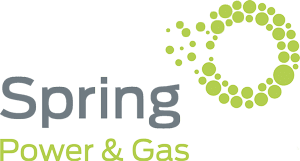Solar farms or solar power plants are large-scale photovoltaic arrays that harvest solar energy and convert it into electricity. Unlike residential solar panel systems installed on rooftops, solar farm panels are set up on the ground across large expanses of generally flat, clear land.
What Is a Solar Farm Made Up Of?
A typical solar farm has four major components:
- Solar Panels: These panels absorb sunlight and convert the energy into electricity. The power generated by the panels is in direct current (DC), which still has to be converted to alternating current (AC) for home use. They also have trackers to follow the sun’s movement and capture the most sunlight.
- Central Inverter: The central inverters are responsible for converting the DC power from the solar panels into AC power before being distributed to the power grid.
- Transformers and Substation: Depending on its type, the transformer will step up or step down the voltage to prepare it for distribution. The substation then collects the power and transfers it to the power grid.
- Control and Monitoring Station: This station gathers solar farm and weather data. It can also control the solar panels to ensure they’re operating efficiently.
Types of Solar Farms
Utility-Scale Farms
Utility-scale solar farms supply power directly to the electric grid. According to the Solar Energy Industries Association or SEIA, solar farms are considered utility-scale if they generate more than one megawatt of energy. These installations are often operated by a party that sells the energy to the electric utility company, though some utility companies own farms themselves.
Distributed Generation Farms
These solar farms operate on a much smaller scale and don’t provide electricity to the main power grid. Distributed generation farms furnish power to a nearby structure, such as a single house or commercial building.
The farm may also be part of a microgrid, which is a smaller power grid that supplies energy to a group of structures, such as a small community, research or military facility, or a school campus. They often serve as an alternative energy source that can restore power quickly in case of outages. This can be helpful with facilities that need a stable supply, such as hospitals.
Benefits of Solar Farms
Less Dependence on Non-Renewable Resources
Unlike fossil fuels like oil and coal, the planet will not run out of sunlight anytime soon. So utilizing solar farms will help more cities consume less non-renewable resources.
Solar farms also make solar energy more accessible to more households. Some homeowners may have opted for other power sources because they couldn’t install solar panels on their rooftops.
Tax Incentives and More Profit
Property owners who invest in solar farms on their land can also be eligible for a 26% federal tax credit. Thanks to the Solar Investment Tax Credit (ITC), they can cash in on these incentives, helping them save more money on taxes each year. The solar farm owners can also sell the generated energy to their local utility for extra profit.
Minimize Pollution
While there are some carbon emissions during the installation process, solar farms themselves do not create as much pollution. They don’t churn out fumes or dump toxic materials in bodies of water, unlike power plants that use fossil fuels. Moreover, solar farms operate quietly and don’t contribute to area noise pollution.
Safer for Wildlife
Since they don’t pollute their surroundings, solar farms are much healthier for the local wildlife. Animals can still breathe in the fresh air, graze on the grass, and drink from nearby water sources. Farmers can still grow trees and crops, which also encourages other organisms to live on the land. Solar panels can even serve as shade for animals on hotter days.
How Much Land Do Solar Farms Need to Work?
The amount of land area needed by a solar farm depends on how many megawatts the solar farm owner wants to generate and the number of homes or businesses to which they’re supplying electricity.
A rule of thumb for solar projects is to set aside between six to eight acres for every megawatt, but solar farmers can still reduce this to between four to five acres. Though it varies in each US state, one megawatt of solar power can power around 100 to more than 250 households.
Of course, factors like climate and lifestyle can also affect solar power consumption. For instance, a household can use more energy for heating or cooling during winter and summer than in more moderate seasons.
Know More About Sustainability Here
Gaining knowledge about what a solar farm is and how it works helps educate people on their energy consumption, helping to save money and lower the carbon footprint in the process. For similar topics and more, you can check out our blog page where we explore a wide variety of subjects, such as renewable energy technologies, ideas for sustainable living, and energy-saving tips. Together with Spring Power & Gas, you can move toward a better future for our planet.
